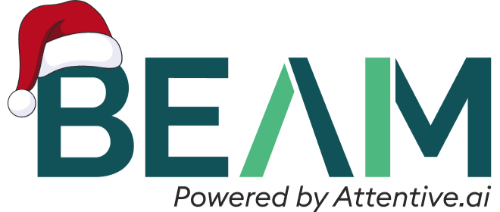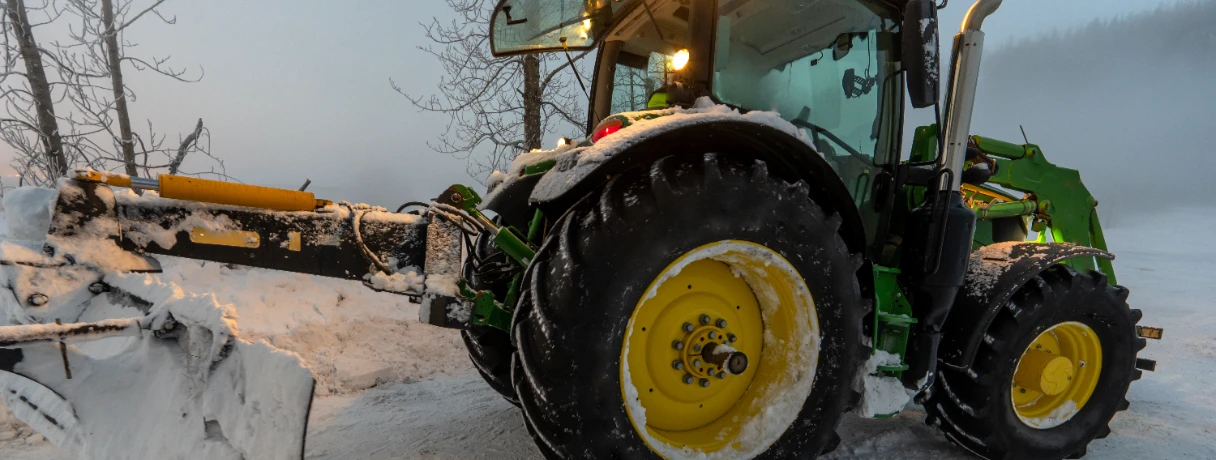For many contractors, preparing a tender often means long nights of manual takeoffs, second-guessing quantities, and racing against tight deadlines. But what if you could reclaim those hours and refocus on what drives your bids–strategy, pricing, and relationships?
That’s the promise of the automated tender preparation process. In this blog, we dive into how automating the takeoff process can significantly cut down tender preparation time, so you can stay ahead with competitive and faster bid generation in a fast-moving market.
But before we talk about how to save time, let’s rewind a bit and look at what tenders are and why they’re such a crucial part of the construction industry.
Understanding the Construction Tender and the Tender Process
A tender is a formal invitation for contractors to submit bids for a construction project. It’s how governments, developers, and private clients select the most suitable contractor for the job.
For instance, to build a new metro station in the city, the municipal body will issue a detailed tender asking contractors for proposals, pricing, qualifications, and timelines. The city ensures a transparent, competitive selection, and the contractor who gets it right wins the job.
Here’s how a standard construction tender process unfolds:
- Prequalification: Shortlisting based on qualifications and past projects.
- Invitation to Tender (ITT): Contractors receive project documents and drawings.
- Takeoff & Estimating: Quantify materials and build cost estimates.
- Bid Submission: Final proposal, ready for submission.
- Evaluation: Client compares bids from different contractors.
- Award of Contract: The project is awarded to the most suitable bidder.
AI for Tendering Versus Automated Tender Preparation
As a key difference, automation follows set rules, but once AI takes over- it learns and adapts, making outputs smarter and more reliable. In the larger picture, both automation and AI are equally valuable in the construction ecosystem.
Automated tender preparation process helps contractors by automating quantity takeoffs, reducing estimating errors, and improving bid accuracy. By speeding up the tendering process, automated tender preparation helps contractors with competitive and faster bid generation to win more projects with confidence. Let’s dive deeper into it and understand what is the role of AI within automated tender preparation.
Automated Tender Preparation: What does AI do at each stage?
AI in automated tender preparation adds intelligence to specific steps, so as to provide confident outputs. While automation would speed up the tender preparation process, AI-assisted steps would ensure the accuracy of the outputs, making AI-assisted automated tender preparation the ideal solution for the construction sub-processes. Explained below is how AI gets weaved into each sub-process under automated tender preparation.
- Document analysis & requirement extraction: AI goes through all the tender documents such as the PDFs, contracts and specs to flag key requirements, deadlines and compliance criteria. This is followed by the takeoff’s review by an experienced QA team, hence ensuring human-in-the-loop confidence for the contractors.
- Drawings & plan interpretation: AI interprets blueprints, 2D drawings or BIM models to identify building components and it classifies the different elements such as walls, doors, rebar, ducts, etc. for quantity measurement.
- AI-based takeoff (quantities & measurements): AI measures lengths, areas, and volumes of different quantities from blueprints with high accuracy, which are further reviewed by human estimators. AI can also highlight potential gaps or overlaps such as quantity or calculation discrepancies for the QA team to review.
- Cost estimation & pricing: By mapping takeoff data to material/labor cost databases, AI predicts realistic and optimal cost ranges using current cost data, however, final pricing remains with the estimator.
- Risk & error detection: AI reduces estimating errors by highlighting inconsistencies, missing items, or unusual cost patterns. This improves the tender accuracy.
- Bid document preparation: AI can pre-populate internal templates or tender forms, while portal-specific entry may still be manual.
This way, AI in automated tender preparation speeds up document reading, ensures accurate takeoffs, improves cost estimation, reduces errors, and supports reliable and faster bid generation.
Why Manual Takeoffs Are Slowing You Down
The takeoff involves going through hundreds of pages of drawings to determine exactly how much material will be needed. They eat up to 40-50% of your bidding cycle. That’s valuable time lost for your estimators.
In a typical 2-week bid cycle, an estimator spends about 5-7 days manually measuring drawings, counting materials, and compiling quantities for the takeoff. For example, measuring pipe lengths, counting fixtures, and calculating ductwork areas by hand can take several hours per page of drawings. This leaves only 1 week for analysis, pricing, and preparing the final proposal—rushing the process and increasing the risk of errors.
Manual takeoffs can take days, even weeks, depending on the size of the project. And because they’re done by hand, they’re prone to costly mistakes—either overestimating (which makes your bid less competitive) or underestimating (which eats into your profits if you win the job).

Let’s say your team spends two weeks preparing takeoffs for a large commercial project. You submit the tender just in time, only to realize later that a spec component was included twice, inflating your materials cost. When you're juggling multiple bids, these small mistakes add up and can seriously impact your win rate. They can lead to:
- Increased chance of errors
- Less time for pricing, supplier quotes
- Lost potential to differentiate your bid
- Slower tender turnaround
How AI-assisted Takeoffs with Beam AI Redefine your Workflows
Let’s say you spot a high-value infrastructure tender with a tight deadline. Manual takeoffs often compress timelines, leaving less time for strategic pricing or supplier negotiations.
With automated tools like Beam AI, you can streamline the takeoff process, freeing up valuable time for your team to focus on refining estimates and pursuing more bids.
Beam AI is an AI-based construction takeoff software built to automate material quantity extraction across 16+ trades–including concrete, HVAC, steel, and more.
Slash Tender Preparation Time with Beam AI
Let’s look at some of the features of Beam AI that help slash tender preparation time:
100% Automated Takeoffs
With Beam AI, you can:
- Simply upload your plans,
- Define the project scope, and hit submit.
- Beam AI extracts quantities, considering all specifications and keyed-in notes.
Every takeoff is reviewed by an experienced estimator, who validates the takeoff before it reaches you. The result? 90% time saved on takeoffs, and your estimating team can bid on 2X more jobs. Check how Pilkington Construction witnessed 1.5x business growth with more bids submitted using Beam AI.
Automatic Change Detection Across Addenda
The dreaded last-minute addendum no longer means scrambling to redo your entire takeoff. Beam AI automatically tracks and updates revisions from addenda. It identifies modifications and updates the takeoff calculations accordingly. Whether it's a shift in layouts or changes in specifications, the AI spots the differences, recalculates quantities, and ensures your data is always up-to-date.

Multiple Export Options
Beam AI's cloud-based system enables seamless real-time collaboration on the same takeoff, anytime, anywhere.
- Custom Excel Reports: Streamline your workflow by exporting takeoff quantities directly into customizable Excel files that align with your existing estimating processes.
- Shareable Link: Enhance team communication by sharing takeoffs effortlessly. Beam AI's cloud-based, view-only link feature allows you to share project takeoffs with general contractors, suppliers, and other stakeholders with a single click. They can access and review plans in real time from any location, eliminating the hassle of outdated spreadsheets and email attachments.
- PDF Reports: Present your takeoffs by exporting annotations directly onto the original plans. This gives clients and stakeholders a clear, visual understanding of the project details, making your submissions more impactful.
Takeoff Library
Managing multiple takeoff projects is easy with Beam AI's centralized Takeoff Library. The library feature stores all your completed takeoffs in one easily accessible location. Beyond storage, the Takeoff Library helps with collaboration. Your team can access project takeoffs in real time, ensuring everyone operates with the latest information.
Editing Toolbar
Beam AI's intuitive editing toolbar provides you with customization capabilities. Features include the ability to edit, add elements, rotate, split, cut openings, and more. A standout feature is Tags. Organize your quantities effectively by assigning tags based on various categories such as phase, trade, or any other relevant criteria. Each takeoff can have multiple tags or sub-tags, providing the flexibility to categorize data in a way that optimizes your workflow. To perform takeoffs with Beam AI, you need to follow 4 simple steps:
- Upload the site plan in PDF format
- Define the scope of work and submit
- The AI extracts quantities from the plans
- Our Quality Assurance team reviews delivers your takeoff within 24-72 hours
Beam AI simplifies the entire process with a fast, 4-step process- delivering your quality-assured takeoffs within 24–72 hours.
Manual takeoffs drain time and energy that could be better spent strengthening your bid and securing more work. With Beam AI, you’re not replacing expertise but enhancing it. Automated takeoffs help your team move faster, reduce errors, and stay focused on the parts of the bid that truly move the needle.
So the next time a tender drops, don’t just open your takeoff tool—upgrade it. Get time back with AI Takeoffs. Experience Beam AI now!
Wrapping Up
Manual takeoffs drain time and energy that could be better spent strengthening your bid and securing more work. With Beam AI, you’re not replacing expertise but enhancing it. Automated takeoffs help your team move faster, reduce errors, and stay focused on the parts of the bid that truly move the needle.
So the next time a tender drops, don’t just open your takeoff tool—upgrade it. Get time back with AI Takeoffs.










.jpg)

.png)

.webp)

